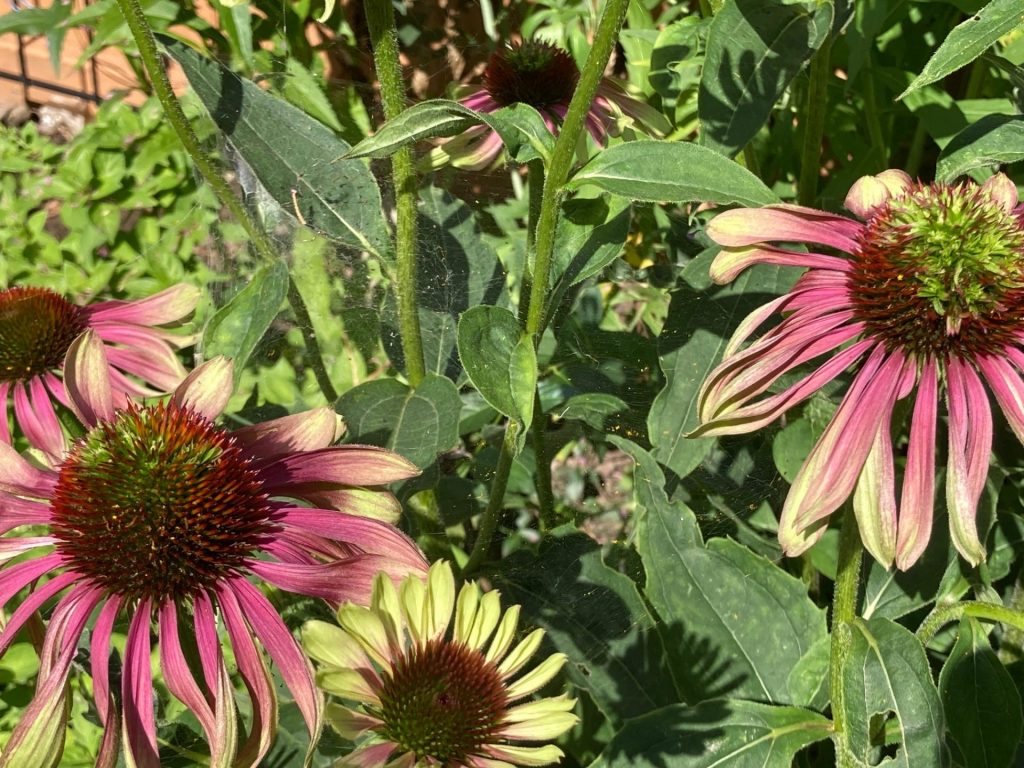
Hi I have this Full sun echinacea about 3/4 feet tall and has been in this spot for about 3/4 years. Toronto north York. This year, it’s the biggest and fullest but either has asters yellow or mites of some kind? There is webbing with little brown bugs. Very hard to see even with my eye. What can I do to help this plant without throwing it out? If it’s mites I read I am chop it to the ground in the fall but the webbing is gross to see and I want to chop it now if it won’t negatively impact the plant (or maybe that’s just the best chance option?)
Anyways I just want to know what I should do and if it’s identifiable. Not every come head has the disease looking part (bright green sticking out of middle) but a lot of them do. And the webbing, which I’m not even positive is related because the webbing is newer but the green parts have been there since the first flowers opened.
Thank you for contacting the Toronto Master Gardeners with your question concerning your coneflowers. The following resonse is from one of our earlier post tited: Aster yellows or erythroid mites?
“Coneflowers (Echinacea) are a popular garden flower. They not only provide beautiful colour to the garden form summer through fall , they are also an excellent seed source for migratory birds.
While there are other issues that could affect your coneflower such as Japanese beetles, aphids and earwigs there are two serious problems that affect coneflowers: Coneflower Rosette Mite and the phytoplasma disease known as Aster Yellows.
The coneflower rosette mites live inside the developing flower buds and suck nutrients from the base of the flower causing the stunted and distorted flower parts, such as what appears to be missing petals.
Aster Yellow disease is caused by a phytoplasma. This small specialized bacterium which is spread by from plant to plant by sucking insects, infects the plant phloem tissue. The phloem tissue is responsible for conducting food that is made through photosynthesis from the leaves to all other parts of the plant. As a result, symptoms of aster yellows include chlorotic, curled foliage; stunted stems; and bizarrely distorted flower parts.
Since the overall health of your plant doesn’t seem to be affected, I believe that your coneflower is affected by Coneflower Rosette mites. It is important to cut back the infected plants to the ground in the fall and remove all plant parts from the area to prevent re-infestation next year. It is also important to not compost these plant parts, but instead to place them in a black plastic bag and dispose of them in your garbage.”
Ohio State University has an excellent fact sheet titled Coneflower Cleanup which illustrates the effect of the two diseases on the coneflower.
Good Luck with your coneflowers
July 30, 2021

